Log the Indian Millets
Jenifer Theresal J1, Sajna Fathima2
1Senior Dietician, Kauvery Hospital, Tennur, Trichy, India
2Junior Dietician, Kauvery Hospital, Tennur, Trichy, India
Correspondence: Tel.: +91 8148420506; dietary.ktn@kauvery.in
Abstract
Millets are a powerhouse of nutrients. They have started reoccupying the space in most Indian kitchens as it has its own benefits. Besides being gluten-free, millets boost one’s health and improves weight loss, Millets are available in a variety of types, and each has its health benefits. We are about to discuss few millets which are packed with nutrients but have been almost forgotten. Various names of the millets in various states and the health benefits of the same are also discussed.
Background
Millets are traditional grains, grown and consumed in the Indian subcontinent for the more than 5000 years. Millets are small grained, annual, warm – weather cereals belonging to the grass family. They are rain – fed, hardy grains which have low requirements for water and fertility when compared to other popular cereals. They are highly tolerant to drought and other extreme weather conditions. Millets are highly nutritious, non-glutinous and non-acid forming foods. Millets have many nutraceutical and health promoting properties especially their high fibre content. Millets act as a probiotic feeding for micro – flora in our inner ecosystem. Millets hydrate our colon to keep us from being constipated. Niacin in millet can help lower cholesterol. Millets contain major and minor nutrients in good amount along with dietary fibre.
Millets are high in nutrition and dietary fibre. They serve as good source of protein, micronutrients and phytochemicals. The millets contain 7-12% protein, 2-5% fat, 65-75% carbohydrates and 15-20% dietary fibre. The essential amino acid profile of the millet protein is better than various cereals such as maize. Millets contain fewer cross-linked prolamins, which may be an additional factor contributing to higher digestibility of the millet proteins.
Log the Indian Millets
- Proso millet
- Buckwheat millet
- Browntop millet
- Amaranth millet
Proso Millet
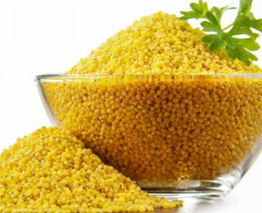
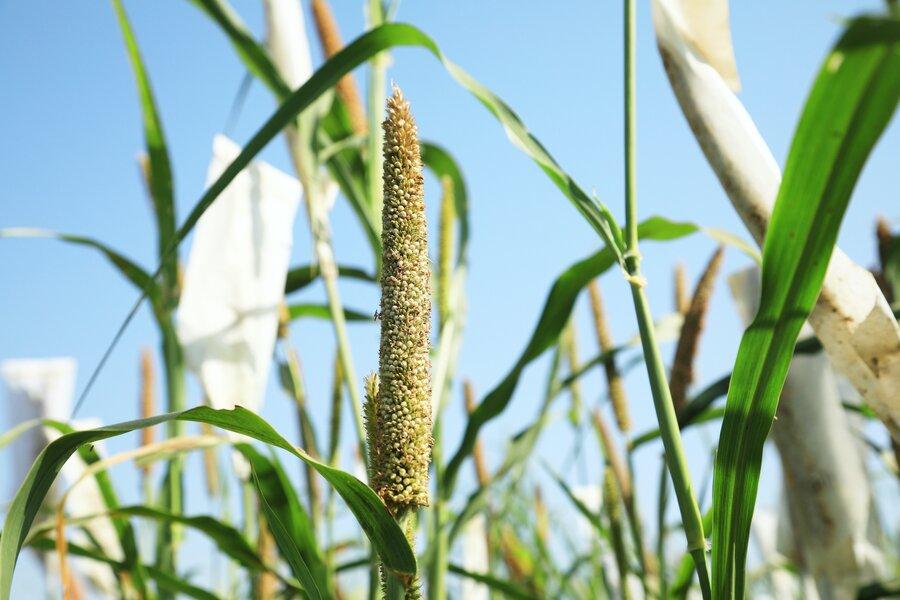
Proso millet plant with Whole grain
| Language | Names |
| Botanical name | Panicum miliaceum |
| Tamil | Pani Varagu |
| English | Proso Millet |
| Hindi | Barri, Chena |
| Malayalam | Panivaragu |
| Gujarati | Cheno |
| Kannada | Baragu |
| Telugu | Variga |
| Bengali | Cheena |
| Punjabi | Cheena |
- Proso millet has multiple benefits when consumed as human food.
- Proso millet is rich in minerals, dietary fiber, polyphenols, vitamins and proteins.
- It is gluten-free and therefore, ideal for the gluten intolerant people.
- Proso millet contains high lecithin which supports the neural health system.
- It is rich in vitamins (niacin, B-complex vitamins, folic acid), minerals (P, Ca, Zn, Fe) and essential amino acids (methionine and cysteine).
- It has a low glycemic index and reduces the risk of type-2 diabetes. It can regulate cholesterol metabolism.
- Proso millets are a fibre and nutrients rich food that can help to fight against cancer.
Browntop Millet
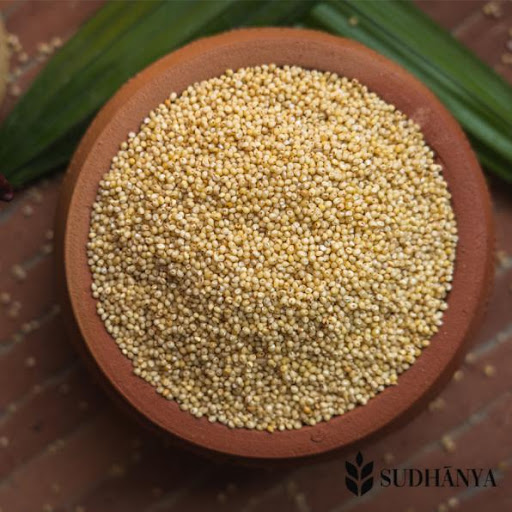
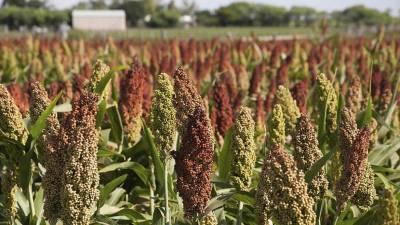
Browntop millet plant with Whole grain
| LANGUAGE | NAMES |
|---|---|
| Botanical name | Brachiaria ramosa |
| Tamil | Palapul/Kulasama |
| English | Browntop Millet |
| Hindi | Hari Kangni |
| Malayalam | Chama Pothaval |
| Gujarati | Hari Kang |
| Kannada | Korale |
| Telugu | Andakorra |
| Punjabi | Hari Kangni |
- Brown top millet is low in glycaemic index and carbs so it prevents unwanted hunger pangs and avoid a sudden spike in sugar levels.
- Adding the brown top millet to the daily diet may help to stabilize blood sugars, control HbA1C and promote insulin sensitivity.
- Brown top millet being gluten-free is a great alternative for those suffering from celiac disease (gluten allergic) and irritable bowel syndrome.
- This millet strengthens the digestibility and absorption of starch in the body and reduces bloating and cramping. Aside from this, help alleviate constipation by regular rising bowel movements.
- Being imbued with protein, dietary fibre and low on carbs these tiny millets diminish bad LDL cholesterol, avert the build-up of clots in the arteries besides improving heart functions.
- Blessed with an impressive source of calcium, phosphorus and magnesium brown top millet plays a key role in strengthening bones and muscles.
- Adding Brown top millets in the meal plan can help in lowering the BMI and burning fat.
Buckwheat Millet
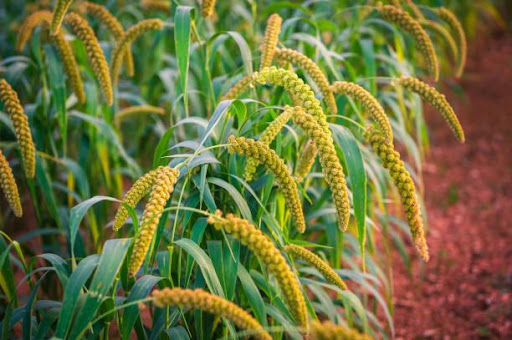
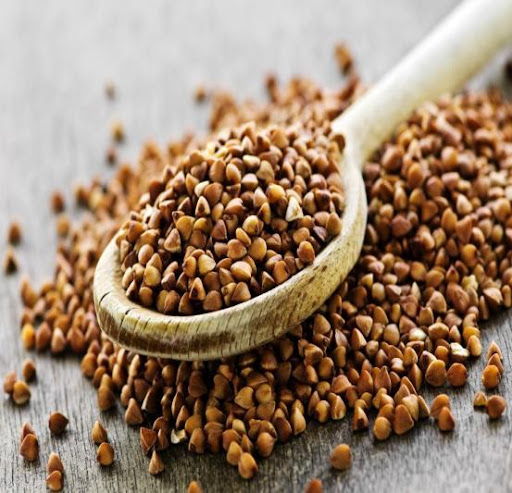
Buckwheat millet plant with Whole grain
| LANGUAGE | NAMES |
| Tamil | Paaparai |
| English | Buckwheat |
| Hindi | Kootu |
| Malayalam | Kootu |
| Gujarati | Kooti-no daro |
| Telugu | Kuttu |
| Bengali | Titaphapur |
- Buckwheat is a good source of fiber. Dietary fiber helps improve blood cholesterol levels, which, in turn, reduces the risk of heart disease, diabetes, stroke, and obesity.
- Buckwheat millet contains a good source of fiber and niacin which helps for digestive health.
- Buckwheat is high in protein. High-protein foods are essential for weight management because they lead to greater satiety with fewer calories than other types of food.
- Including buckwheat in a healthful diet could lead to greater satiety and help with weight management.
- Buckwheat is a source of complex carbohydrate. This form of carbohydrate can help people manage their blood glucose levels.
Amaranth Millet
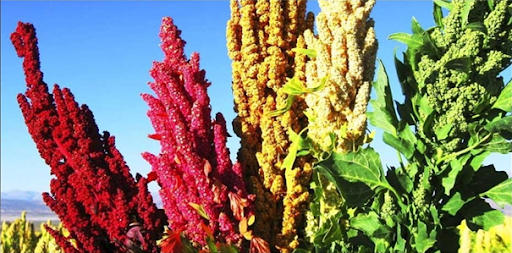
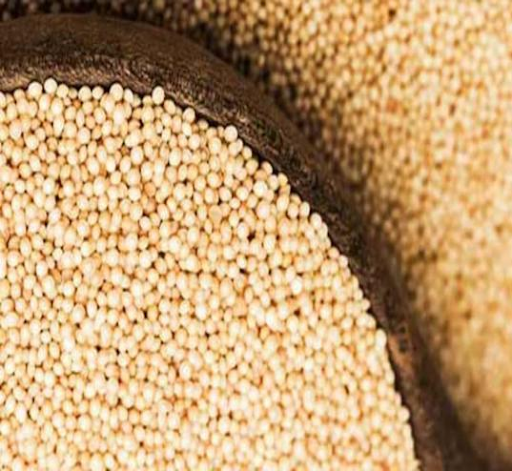
| LANGUAGE | NAMES |
| Tamil | Thandu keerai vidhai |
| English | Amaranth millet |
| Hindi | Rajgira/ Ramdana |
| Punjabi | Chaulai beej |
| Gujarati | Rajgaro |
| Telugu | Thotakura ginjalu |
| Bengali | Amaratba bija |
| Kannada | Danthu beeja |
| Marati | Cavali biya |
- Amaranth millet are naturally free from gluten and have a lower caloric content than rice and wheat
- Amaranth millet loaded with Calcium, magnesium, copper, zinc, phosphorus and potassium.
- Amaranth oil can also be used for minor injuries like sprain and specific skin issue.
- Amaranth millet is high in dietary fibre with a rich dietary source of phytosteriols, with cholesterol – lowering properties.
- Amaranth millet also contains a Lunasin – like peptide and other bio-active peptides which are thought to have cancer – preventive and anti-hypertensive properties.
Conclusion
In conclusion, bringing out the rare millets and including it to the diet may help from protecting cardiovascular health, preventing the onset of diabetes, helping people achieve and maintain a healthy weight, and managing inflammation in the gut since it is packed with anti-oxidants and other macro and micro nutrients.
References
Baryeh EA. Physical properties of millet. J. Food Eng. 2002;51:39-46.

Jenifer Theresal J
Senior Dietician

Ms. Sajna Fathima
Junior Dietician
